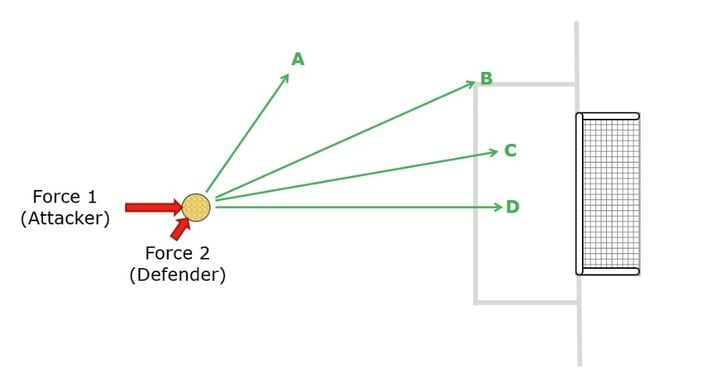Some students find it hard to think of forces in terms of their magnitude and direction (Driver et al, 1994). Taking the strength of a force into account is essential to analysing the effect of forces in different situations. When students see several forces acting together they often perceive them as engaged in a struggle with the strongest one winning (Erickson and Hobbs, 1978).
Students should complete the questions individually. This could be a pencil and paper exercise, or you could use an electronic ‘voting system’ or mini white boards and the PowerPoint presentation. The follow on question will give you insights into how they are thinking and highlight specific misunderstandings that some may hold.
If there is a range of answers, you may choose to respond through structured class discussion. Ask one student to explain why they gave the answer they did; ask another student to explain why they agree with them; ask another to explain why they disagree, and so on. This sort of discussion gives students the opportunity to explore their thinking and for you to really understand their learning needs.
Differentiation
You may choose to read the questions to the class, so that everyone can focus on the science. In some situations it may be more appropriate for a teaching assistant to read for one or two students.
The ball follows path C because this is in the direction of the resultant force. Most of the push is forwards, with only a bit to the side. This means that the best answer form part b is B – force 1 has the biggest effect.
Students choosing B for part 1 have treated each force as equal in size and may not have understood the length of the force arrows shows the strength of force.
Answer D to part a shows they have viewed the interaction of the forces as a competition with one of them ‘winning out’, and this is likely to be followed with choice B for part b for the wrong reasons.
Answers a) A, b) C show that the student is not combining the action of the forces and is picturing force 1 as a motion that is altered. Rolling a ball in a straight line and nudging it sideways can show how motion is really changed.
If students have misunderstandings about predicting correctly and explaining the changes caused by more than one force acting on an object at the same time, then giving them opportunities to discuss different situations of forces acting with other students can help to clarify their thinking, or raise more specific questions for them to ask. Modelling this situation and similar ones with, say, a football can also help students understand how the effect of two forces works together.
The following BEST ‘response activity’ could be used in follow-up to this diagnostic question:
Response activity: Cycling forces
Driver, R., Squires, A., Rushworth, P. and Wood-Robinson, V. (1994) Making sense of secondary science, research into children’s ideas, Routledge, London, England.
Erickson, G. and Hobbs, E. (1978) ‘The developmental study of student beliefs about force concepts’, Paper presented to the 1978 Annual Convention of the Canadian Society for the Study of Education. 2 June, London, Ontario, Canada.
